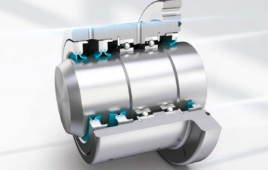The world of electricity can be very complicated. But what about electricity do we, in fact, know? Well, we do know electrical wires are designed to carry current from one element to another. What we DON’T know is how an electrical wire is even made. Of course, as always, I am here to help with any confusion!
A conductor is a material in which electricity can flow through. Electrical conductors are made up of metals such as, copper, aluminum, etc. These metals are used to make wires. Most wires are made out of copper because it conducts electricity with high flexibility and very little resistance.
The first stage in the manufacturing process of a conductor is the wire-drawing. The wire-drawing consists of reducing the diameter of the wire gradually to fit its final diameter to increase ductility and conductivity.
Once the diameter is reduced, the wire is drawn further to decrease the diameter of the wire to the size needed for each kind of conductor.
In the second stage of this process, the wires undergo a heat treatment called annealing. Annealing is a process of heating metal and allowing it to cool slowly in order to remove internal stresses and toughen the metal. The point of this treatment is to increase the conductivity of the wire.
Now we need insulation. Insulators are different synthetic materials that are used to insulate electrical wires. Because the current runs along the outside of the copper wires, they need to be insulated from other wires and conductive surfaces. An insulating cover over the conductor also prevents any current leakages.
Different insulation materials may be used depending on the characteristics of the cable required. Quality of an insulation material depends on two basic characteristics: insulation capacity and its heat resistance.
Cables sometimes contain several different wires wrapped together in an insulator. In some cases, the cable may require additional elements in order to improve protection. For instance, electrical coverings called “screens” insulate the signals that circulate in the cable, shielding the power cables to prevent them from external interference.
And THAT is how an electrical conductor is made!
This blog originally appeared on www.blogquail.com/electrical-cable.
Filed Under: Cables + cable management, Industrial automation




